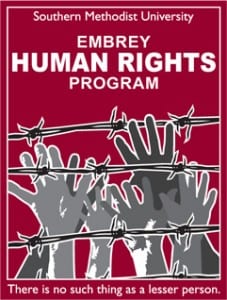“There were several sensational crimes during the year. The chief of these was the lynching on March 3 of Allen Brooks, a Negro who allegedly had criminally assaulted a two-and-a-half-year-old girl in the loft of a barn at her parents’ home, where he was employed. A mob overpowered Sheriff A.L. Ledbetter, his deputies, and fifteen or twenty policemen to seize the Negro and throw him headfirst from a second story window of the Criminal Courts Building. He then had a rope placed around his neck and was dragged up Main Street to the ornate Elks’ Arch at the intersection of Main and Akard Streets, where he was hanged from a telephone pole. The arch was dismantled soon afterward because of its association with this lynching incident.”
From the Writers’ Program of the Work Projects Administration in the City of Dallas, The WPA Dallas Guide and History, Dallas Public Library: Dallas, Texas, 1992, p 86. UNT Digital Library. http://digital.library.unt.edu/ark:/67531/metadc28336/. Accessed March 2, 2015.
On March 3, 1910, a crowd of approximately 5,000 people lynched an African-American man in broad daylight in an intersection in the heart of downtown Dallas. His body was hung on the Elks Arch, a decorative structure that welcomed visitors to the city. Within a year, the arch was gone. Why? What does this disappearance teach us about the shape of violence and racism in Dallas?



Dallas Untold is an online exhibit that draws from multiple archives in Dallas, bringing photographs, documents, and other primary sources together to enrich the conversation about the meaning of this absence. It is meant for students, researchers, social justice advocates, and anyone who wants to know more about what happened, really. Some of these artifacts are being made publicly available for the first time. For my own part, I am convinced that the dismantling of the Arch was not the result of its association with the lynching incident, not a result of shame or contrition at all. Its removal is exactly consistent with a theme of white racism: the disposability of black men and women; their memories, their neighborhoods, their very bodies. When we connect the assembled archival evidence with the built environment, the injuries and erasures of this structural racist violence become legible in the Dallas landscape.
Still, this exhibit does not aspire to establish the definitive collective memory of this event, even if such a thing were possible. I am in fact acutely aware that for a significant segment of the Dallas population this is not a forgotten or “untold” episode at all. I propose no easy solutions in what follows. My hope really is that these materials will help extend and broaden the reach of existing discussions about the ethics of lynching memory in Dallas and beyond.
The project is supported by the Embrey Human Rights Program at Southern Methodist University, the Norwick Center for Digital Services and DeGolyer Library Special Collections, and features contributions from the Dallas Public Library Texas/Dallas History and Archives Division and the Dallas Historical Society. The principal researcher on this project is Christopher J. Dowdy, whose work on lynching memory in Dallas began when he was a Ph.D. student in the Graduate Program in Religious Studies at SMU.




